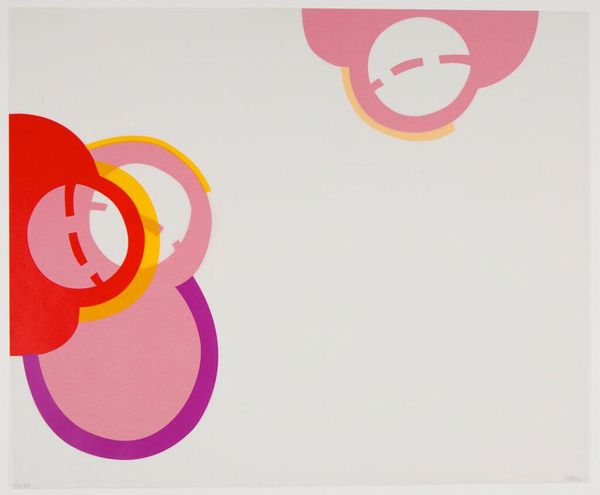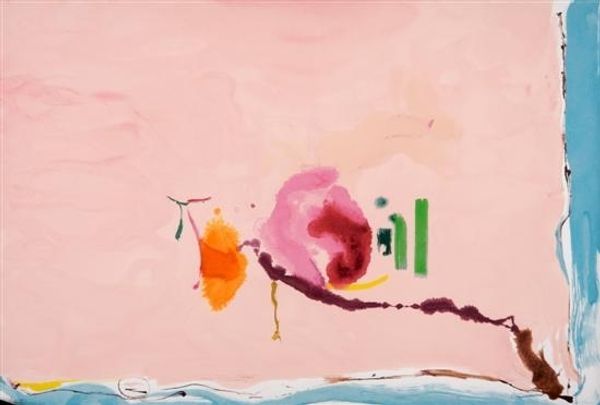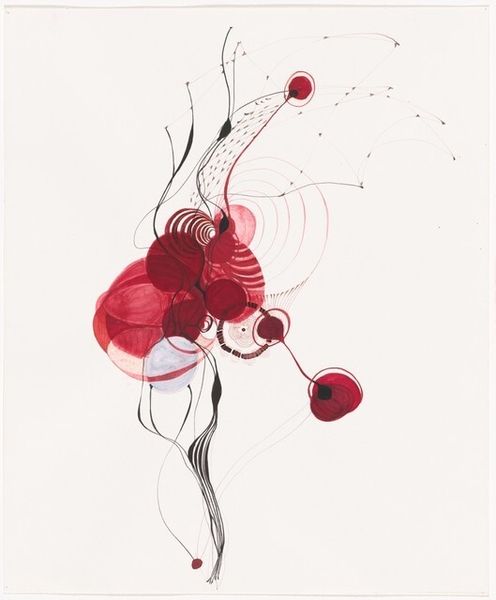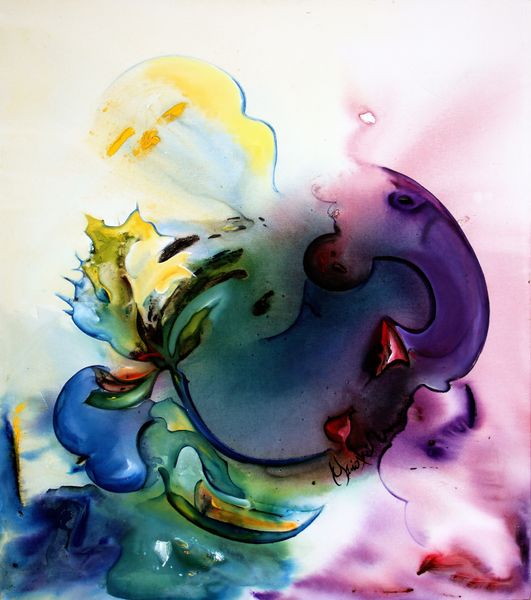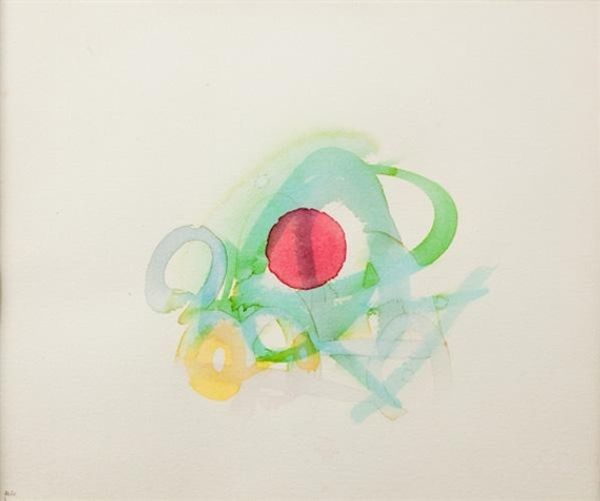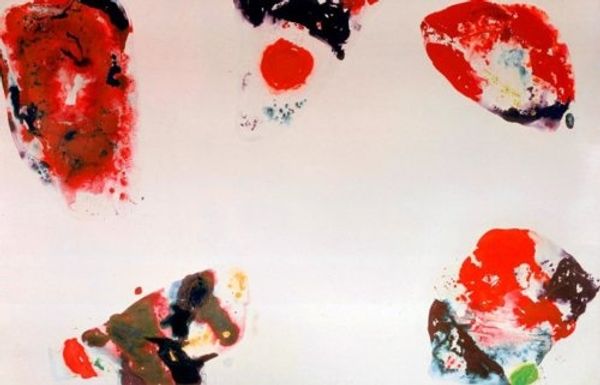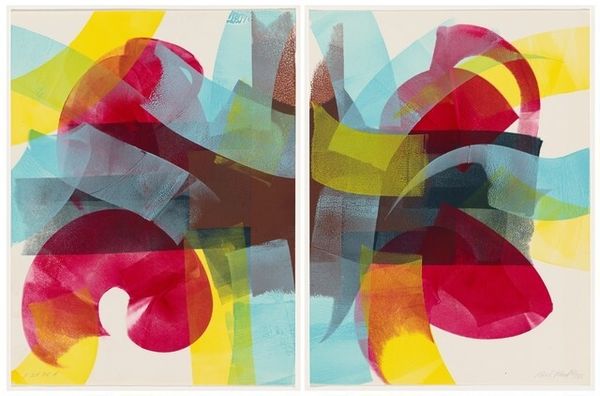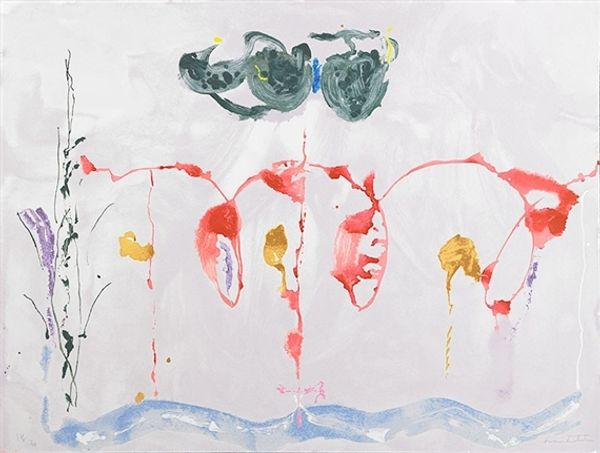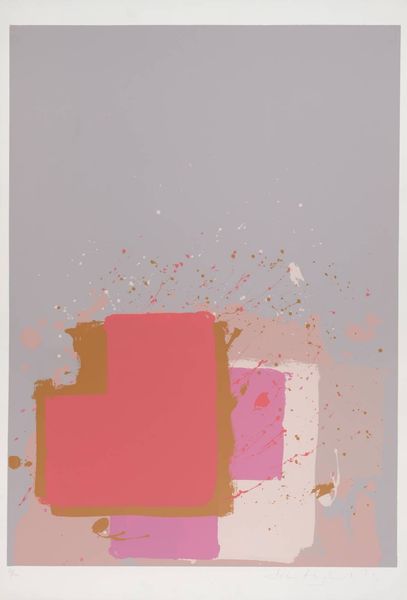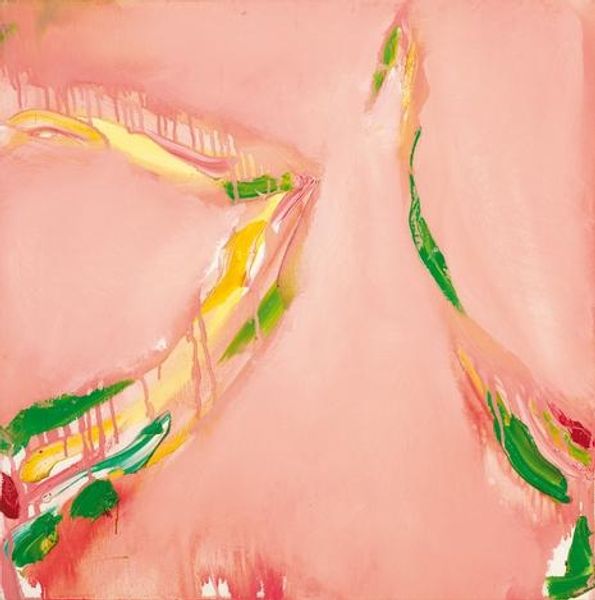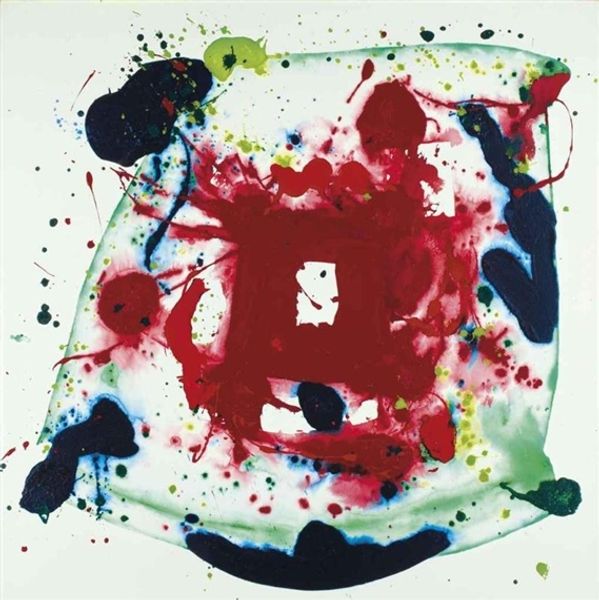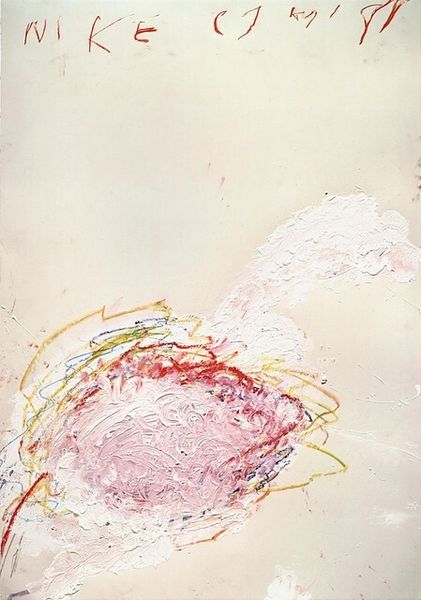
painting, ink
#
abstract-expressionism
#
organic
#
painting
#
ink
#
pink
#
geometric
#
abstraction
#
modernism
#
orange
Copyright: Luis Feito,Fair Use
Curator: This striking, vibrantly colored abstract work is simply titled "Untitled (Red, orange and pink)" by Luis Feito. The medium is ink on what appears to be paper. Editor: My first impression? It's incredibly fluid, almost weightless. The colors seem to bleed into one another, giving it a very organic feel, like some kind of magnified cell structure. Curator: Absolutely. The application of the ink creates these translucent layers. Feito's association with Abstract Expressionism allows us to examine this piece through the lens of post-war anxieties and the search for individual expression outside of the more recognized artistic spheres of influence. It also gives context to the development of Spanish modernism outside of more historically accepted Western artistic outputs. Editor: Yes, I am wondering about his context and choices, and where his career stands in understanding post-war artistic reactions that reject formal tradition. One sees it as emerging in dialogue with existentialist thought and an impulse towards expressing interiority. How do we then look at this work? It almost defies structural interpretation; it feels intensely personal but also somehow universal in its symbolic and almost fractal nature. The use of reds, oranges, and pinks – traditionally associated with passion and life and… femininity – does that amplify this interpretation of "interiority?" Curator: I believe the key is seeing how these organic, almost geometric shapes push against conventional expectations within the traditional, Western artistic establishment of his era. You mentioned feminine aspects – let's consider if those hues deliberately reject masculinity and instead offer commentary about Spanish artistic contributions by questioning what has historically become a male-dominated field of endeavor. What visual dialogues are enabled by the way Feito utilizes those color tones? How can we reimagine canonical Spanish painters like Goya? Editor: Perhaps Goya serves more as a critical historical predecessor to the art of Feito's period, reflecting on trauma and violence rather than providing aesthetic structures or formal themes. In terms of engaging art for the public sphere and discourse, perhaps thinking of social change might bring interesting parallels to the world now? Curator: Yes, the power of art to promote cultural change or, at the very least, spark a new viewpoint cannot be overstated, especially when viewing marginalized art like that found in Spain. That's definitely the point of looking closely and asking pointed questions about why and how we frame the conversations! Editor: Indeed. "Untitled" leaves you with more to contemplate regarding one's own internal landscapes. The potential here allows it to almost evolve to become a metaphor about the potential within abstraction.
Comments
No comments
Be the first to comment and join the conversation on the ultimate creative platform.

